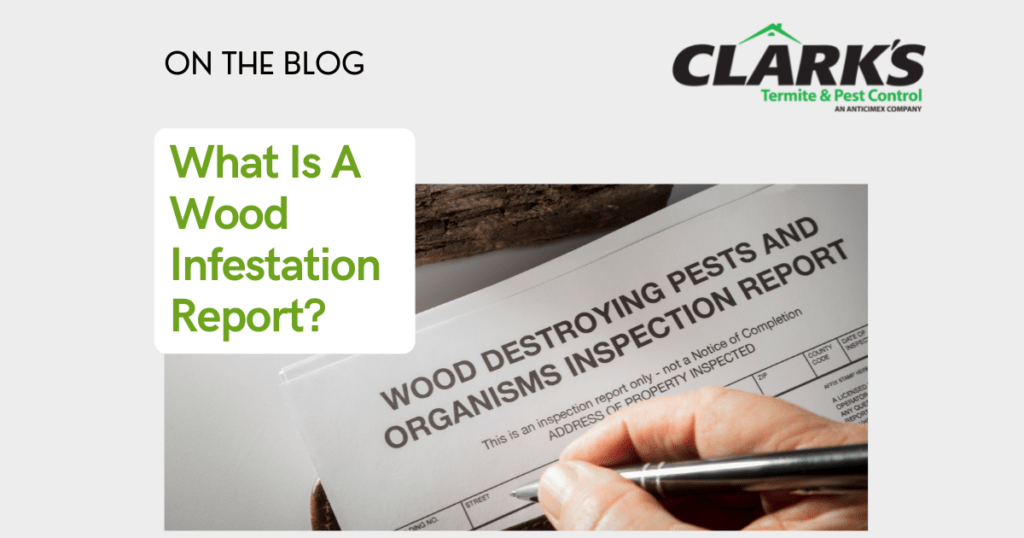
What Is A Wood Infestation Report?
In most cases, if you are buying, selling, or refinancing a home, a termite inspection will be required. Most lenders and realtors require a Wood Infestation Report.
A Wood Infestation Report shows visible infestation and damage caused by insects (e.g., termites and beetles) and decay in inaccessible areas of the structure. Commonly referred to as a termite letter or CL-100, it informs the lending institution and buyer of the results of a pest inspection. Before they will lend money on a home, banks and lending institutions inspect for termite damage and other wood-destroying organisms.
A Wood Infestation Report: A Breakdown
Page 1 of a Wood Infestation Report (also called WDIR or WDI)
- Page 1 gives you information about the inspection and answers questions such as:
- Where the Pest Control Operator found the damage
- What caused it
- Any visible signs of infestation
- Difficult-to-reach areas that prevent a technician from inspecting the home
- If a builder was contacted to assess the damages.
Page 2 of a Wood Infestation Report
- Page 2 provides areas of concern, such as:
- Past treatment locations
- Inaccessible areas
- Space for comments regarding the information reported on page 1.
A Pest Control Operator is often the only one who goes beneath the house or in the attic. Structural and electrical problems like plumbing, roof leaks, etc., are not their areas of expertise. Building Inspectors/Contractors licensed or registered with the South Carolina Residential Home Builder’s Commission should be the ones to inspect these problems.
A Wood Infestation Report is DIFFERENT than an Annual Termite Inspection
Those who have a Termite Bond sometimes mistake the Annual Termite Inspection as a WDIR report. The inspection report homeowners receive after an annual inspection is not a legal document.
- During an annual inspection, a certified pest professional (or technician) inspects your home for termites, while a wood infestation report is an inspection of any wood-destroying organisms that could affect the home, and does not provide any warranty or guarantee for pre-existing or future conditions of the home.
What You Should Do If Your Wood Infestation Report Does Not Come Back “Clear”
A “clear” CL-100 indicates that there were none of the following present at the structure:
- Visible wood-destroying insects (and no damage caused by them)
- Structural water damage
- Adverse moisture conditions that require repair
These are conditions at the date and time of the review only, and should not speculate any past or future needs.
The Department of Pesticide Regulation will take appropriate enforcement action if Pest Control Operators fail to report any activity. They are required to report any issues, regardless of who performs the repairs or treatments. It is true that some wood infestation reports aren’t “clear.” However, repairs that have been made adequately or aren’t structurally significant should not affect the sale of a home. Most South Carolina homes over ten years old may have some wood-destroying organism damage. In the case of a lender requiring a “clear” letter in the sales contract, estimates must be provided for any repairs, corrective action, and treatments needed to remedy the issues on the CL-100. There are some loan situations or loans which do not require a CL-100 to be “clear”. You should consult your sales representative to determine the best course of action.
If you have any other questions, don’t worry! We’re here to help. Visit our Inspections page to see what a Wood Infestation Report looks like, and for more information on all things termite inspections.
Please email our team at clarkscsr@clarkspest.com, or call our Toll-Free number 866-781-4991.
